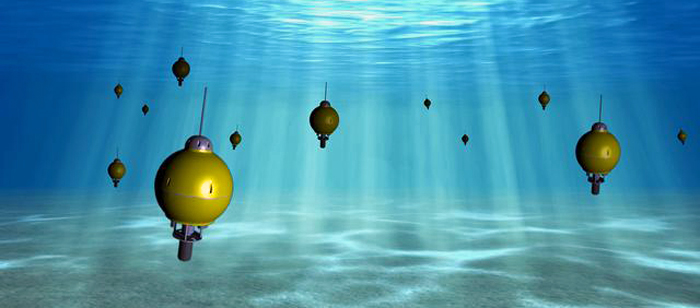
Dissertation Defense
Design and Analysis of Underwater Acoustic
Networks with Reflected Links
Lloyd Emokpae
11:00am Tuesday, 12 November 2013, ITE 346, UMBC
Underwater acoustic networks have applications in environmental state monitoring, oceanic profile measurements, leak detection in oil fields, distributed surveillance, and navigation. For these applications, sets of nodes are employed to collaboratively monitor an area of interest and track certain events or phenomena. In addition, it is common to find autonomous underwater vehicles (AUVs) acting as mobile sensor nodes that perform search-and-rescue missions, reconnaissance in combat zones, and coastal patrol. These AUVs are to work cooperatively to achieve a desired goal and thus need to be able to, in an ad-hoc manner, establish and sustain communication links in order to ensure some desired level of quality of service. Therefore, each node is required to adapt to environmental changes and be able to overcome broken communication links caused by external noise affecting the communication channel due to node mobility. In addition, since radio waves are quickly absorbed in the water medium, it is common for most underwater applications to rely on acoustic (or sound) rather than radio channels for mid-to-long range communications. However, acoustic channels pose multiple challenging issues, most notably the high transmission delay due to slow signal propagation and the limited channel bandwidth due to high frequency attenuation. Moreover, the inhomogeneous property of the water medium affects the sound speed profile while the signal surface and bottom reflections leads to multipath effects.
In this dissertation, we address these networking challenges by developing protocols that take into consideration the underwater physical layer dynamics. We begin by introducing a novel surface-based reflection scheme (SBR), which takes advantage of the multipath effects of the acoustic channel. SBR works by using reflections from the water surface, and bottom, to establish non-line-of-sight (NLOS) communication links. SBR makes it possible to incorporate both line-of-sight (LOS) and NLOS links by utilizing directional antennas, which will boost the signal-to-noise ratio (SNR) at the receiver while promoting NLOS usage. In our model, we employ a directional underwater acoustic antenna composed of an array of hydrophones that can be summed up at various phases and amplitudes resulting in a beam-former. We have also adopted a practical multimodal directional transducer concept which generates both directional and omni-directional beam patterns by combining the fundamental vibration modes of a cylindrical acoustic radiator. This allows the transducer to be electrically controlled and steered by simply adjusting the electrical voltage weights. A prototype acoustic modem is then developed to utilize the multimodal directional transducer for both LOS and NLOS communication. The acoustic modem has also been used as a platform for empirically validating our SBR communication model in a tank and with empirical data.
Networking protocols have been developed to exploit the SBR communication model. These protocols include node discovery and localization, directional medium access control (D-MAC) and geographical routing. In node discovery and localization, each node will utilize SBR-based range measurements to its neighbors to determine their relative position. The D-MAC protocol utilizes directional antennas to increase the network throughput due to the spatial efficiency of the antenna model. In the proposed reflection-enabled directional MAC protocol (RED-MAC), each source node will be able to determine if an obstacle is blocking the LOS link to the destination and switch to the best NLOS link by utilizing surface/bottom reflections. Finally, we have developed a geographical routing algorithm which aims to establish the best stable route from a source node to a destination node. The optimized route is selected to achieve maximum network throughput. Extensive analysis of the network throughput when utilizing directional antennas is also presented to show the benefits of directional communication on the overall network throughput.
Committee: Mohamed Younis (Chair), Tulay Adali, Charles Laberge, Anupam Joshi, Lisa Marvel, Edward Hua